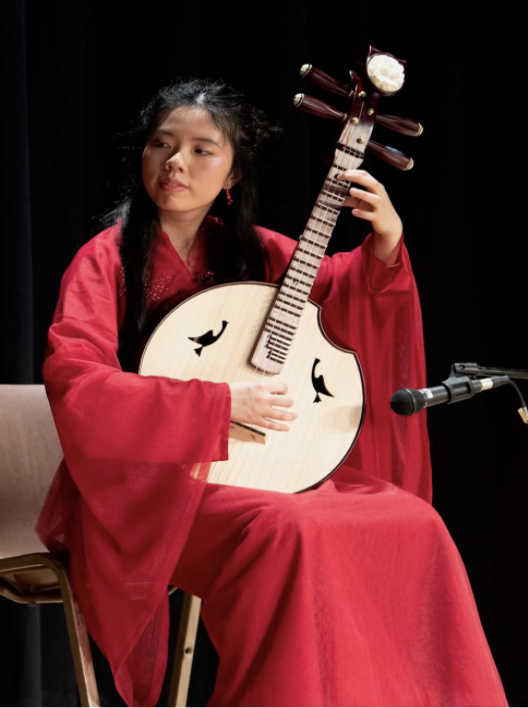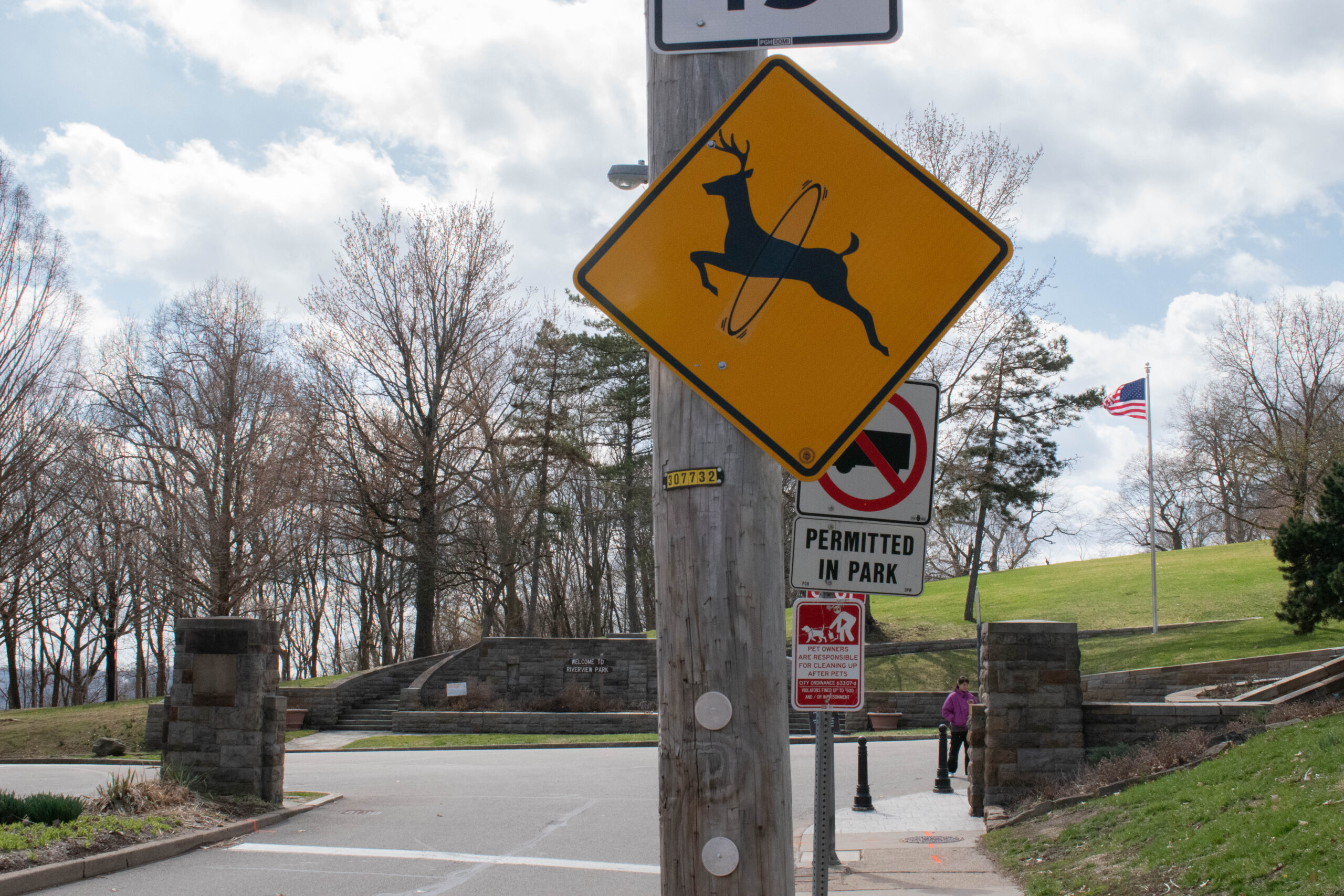By: Caitlyn Scott
Piano was always Nancy Xiao’s style, or, at least that’s what she thought.
Despite her playing for over 10 years, a meeting with her mother’s friend, Jin Yang, changed the course of Xiao’s musical path, causing her focus to shift towards an instrument that many Westerners would mistake as a regular guitar.
This guitar is called the pipa, which is a four-string, pear-shaped Chinese lute that is played either by plucking or strumming. The instrument, according to Northeastern University’s Instruments of the Traditional Chinese Orchestra webpage has a varying number of frets, ranging from 12-26 and is similar to a smaller version of the pipa known as the liuqn.
The pipa is played upright, with the base in the player’s lap and the neck resting upon their shoulder. This makes the instrument not only stand out from the average electric or acoustic guitar but makes it more difficult to play as well.
“The most challenging part of playing the pipa is producing a very clear, precise, and ringing sound when plucking the strings,” Xiao said. “Since I wear plastic nails when playing, there is often a very distracting clicking sound that accompanies every sound I make.”
The School of Chinese Studies dates the origins of the pipa to the Han Dynasty, roughly 2,000 years ago, when other instruments similar to the pipa were brought into China from Persia via the Silk Road.
Along with Xiao, Upper St. Clair High School student Theeya Chen, 17, expressed the difficulties of playing the pipa, along with performing in front of live audiences.
“I’ve performed in my community, mainly at cultural festivals, schools, and New Year’s galas,” Chen said. “At first it was really difficult for me; I would just forget everything I’ve learned but, thankfully, my teacher still let me play and practice more, and now I’m no longer scared and enjoy performing and sharing my culture within my community.”
Although the pipa can be a difficult instrument to learn, Xiao has played for the past three years and now teaches other students at Allderdice High School in Squirrel Hill, Pittsburgh.
“I teach every Sunday where I help students that already play the pipa and those who are brand new,” Xiao said. “It’s a cultural elective that students can take after their language courses.”
While this instrument may not be very well-known, Xiao’s teacher Yang, 39, of China, described how the pipa, and similar instruments, have connected with Chinese and other cultures.
“Pipa is a perfect means that I can utilize to promote Chinese culture and cross-culture collaboration. On one hand, Pipa is one of the most important and expressive East instruments with a history of 2000 years,” Yang said. “It is a cultural symbol. On the other hand, it is versatile enough to work perfectly with various instruments and music styles globally.”
Yang has played the pipa for over 30 years and has taught students from California to Pennsylvania since coming to the United States in 2013.
“Curiosity is the best teacher. I always encourage my students to learn more about the profound and splendid Chinese culture where this beautiful instrument is rooted,” Yang said.

Along with Yang, Xiao expressed similar feelings behind the cultural aspects that the pipa represents within the Pittsburgh area.
“The pipa is a very versatile instrument that can play many genres of music, which gives it lots of unexplored potential. It has a very unique sound which I think can add a lot of interesting texture to a piece,” Xiao said.

“Knowing about pipa also helps us to understand how interconnected musical instruments are and how they have evolved with humans over time. It also shows that even though the pipa originates from China, it is now back on the international stage and has a community of enthusiasts all over the world. People are still exploring what the pipa can do and what boundaries can be pushed with its sound.”
For more information about learning how to play the pipa, contact Jin Yang directly via email yangjin824@gmail.com or cellphone at 216-630-8732.





